Refugia Newsletter #64
Early spring, hardiness zones, rewilding successes, all things EV, and a refugee refugium
Refugia News
For those of you who observe the Christian holy days this weekend: blessings. I hope you can experience meaningful worship services and time to reflect. Today is Holy Saturday, a quiet moment in the Christian calendar between the solemnities of Maundy Thursday/Good Friday and the joy of Easter Sunday. Whatever your faith tradition, I wish you peace today.
In the academic calendar, churning right along next to the liturgical calendar, we are now poised at “uh oh! here comes the end of the semester!” Besides the usual academic duties, I will also be engrossed in helping to host the Calvin Festival of Faith & Writing, coming up April 11-13. In the next edition of this newsletter, I will feature a few relevant moments from this fabulous, three-day party for booklovers.
So not a lot of speaking events or other refugia business to report. I do invite you to listen to a very nice episode of the Green Lectionary Podcast reflecting on the Easter text in the gospel of John. Host Derrick Weston and three of us “usual suspect” panelists consider the resurrection story with keen attention to how creation plays a role. Naturally, we obsess about gardens!
I’ll also point you to what looks to be a neat opportunity: EcoAmerica’s 2024 National Faith + Climate Forum, online on April 16. This is an interfaith gathering featuring national faith/climate leaders. The idea is to join together and empower faith communities to contribute well to the climate effort. Anyone can register, and it’s free! I teach that day, so I can’t go. If you do go, send me a report. I’d love to feature your thoughts in a future newsletter
They’re sprouting! Thankfully, the marauding deer and squirrels are not interested in eating hyacinths. So my lovely bulbs survived the winter.
This Week in Climate News
We’re going to go hard on news this week because my next newsletter will be a special issue, absent my usual categories.
Spring! Here in Michigan, the temperatures have fluctuated a lot, which is not unusual for us in March. We’ve had weird shorts-and-flipflops days, sunny-but-bone-chilling March cold, and today: soft-spring-air-there’s-hope! Around the world, though, spring is (unsurprsingly) arriving earlier. This causes disruptions for flowering plants, including the ones that produce fruits crops (like the cherry crop important to Northern Michigan), since early blooming makes fruiting plants vulnerable to later cold snaps. We’re also seeing disruptions to migration patterns and increased insect and pest populations.
In fact, if you are a gardener, you know that, as of November, the USDA’s hardiness zones have changed a bit. Where I live, we have gone from zone 5b to zone 6a. In other words: it’s warmer. The USDA, which manages the hardiness zone data, announced new maps last November. Here’s the bottom line, from Climate Central’s helpful analysis:
As the coldest times of year warm, plant hardiness zones across the contiguous U.S. have shifted to the north over the three most recent 30-year normal periods.
Average annual minimum temperatures warmed in 231 (95%) of 242 U.S. locations analyzed. These 231 locations warmed by 3.3°F on average since the 1951-1980 period.
According to the USDA, some of the changes might have to do with more detailed, finer-grained data. Still, any gardener will tell you: we’re getting warmer. I’ve had a hard time with the USDA website (seems slow), so if you want to check your zone, try here.
It’s a rather pretty map, though, right? Image credit: https://planthardiness.ars.usda.gov/
In honor of Easter and beauty and new life, let’s turn from warming climate news to great ecosystem news! I can’t tell you how many good news stories about ecosystem restoration I read every week. Around the world, people are working in thousands of ways to rewild, renew, heal, and revive ecosystems and the creatures who live in them. Here are just a couple recent ones.
I love this story about Japanese forest rewilding, reported by James Whitlow Delano of Inside Climate News. A group called the National Conservation Society of Japan are
executing a rewilding plan to open up meadows by felling patches of monoculture conifer plantations that will, one day, regenerate with a natural mixed deciduous forest. The new meadows create space for these raptors, with wingspans of more than six feet, to swoop down on their prey.
Rewilding is an increasingly mainstream environmental movement to allow nature to heal itself, sometimes with the aid of humans, to sustainably restore biodiversity, so wildlife can, once again, prosper in regenerated and protected wild ecosystems.
I’m especially fond of this story because I’m reading the beautiful novel The Overstory (again) with my students, and we are learning (well, they are learning) about deforestation and the problems with tree plantations. So here we have a group repairing tree plantations! I also love that the group is focusing on getting young people involved in this work.
Daisuke Imura. Image credit: James Whitlow Delano, Inside Climate News
Speaking of trees, New York City is planting its first Miyawaki pocket forest on Roosevelt Island. These little forests, meant to create biodiversity quickly, are a great way for urban areas to create more green space, with all the attending benefits for people and creatures. New York’s 2700-square-foot project joins a little global movement, as Aliya Uteuova reports for The Guardian:
Pioneered by Japanese botanist Akira Miyawaki in the 1970s, the concept of planting dense, fast-growing trees and shrubs is popular across Asia, Europe, Africa, South America and the Middle East. In the US, cities like Los Angeles; Berkeley, California; Portland, Oregon; and Cambridge, Massachusetts, have created mini forests with native plant species.
New York’s little forest will be planted with the help of volunteers on city property leased for the purpose. I was surprised to learn that this project is only costing $54,000. Wouldn’t it be neat if faith groups started to sponsor, fundraise for, and build these little refugia in their communities?
The idea, basically, is to plant all the layers so that the forest establishes very quickly. Image source.
Now for some animal stories. Big animals need big spaces—pocket ecosystems won’t do. So how about a rewilded prairie in Montana? Fellow substacker Sam Matey interviewed Dr. Daniel Kinka, who is working on a vast wildlife restoration project in the American West:
Dr. Daniel Kinka is the Senior Wildlife Restoration Manager at American Prairie. This NGO is buying, leasing, and rewilding private and federal land in eastern Montana to create the largest wildlife refuge in the lower 48 states, a growing “American Serengeti” where bison are free to resume their wild grazing patterns and the ancient ecosystem of the northern Great Plains can be reborn.
More on big critters. Hannah Ritchie, queen of data crunching, compiled data back in 2022 to show that European efforts to bring back wild mammals have been impressively effective. Populations of wild bison, badgers, and beavers—among many others—are increasing significantly. Ritchie writes:
How did Europe achieve this impressive recovery of mammal populations?
In short, stopping the activities that were killing mammals off in the first place. Effective protection against hunting, overexploitation, and the destruction of habitats have been key.
There’s a cool chart at this link, but it’s HUGE so I won’t insert it here. Take a look!
Also, the UK is apparently doing really well growing imported American giant sequoias and coastal redwoods in an effort to restore these gorgeous trees after all but 5% were logged in their native US. Thanks to the Victorians for originally bringing some baby redwoods across the pond. Back in the US, a portion of that remaining 5% has been turned over to the stewardship of indigenous people. (All this is also relevant to The Overstory. Have you read this novel? You should!)
Did you know that the European badger looks different from the American badger? Image credit: Cordier Sylvain / Getty Images
In “oh brother [eyeroll]” news, I’ll follow up on my previous feature on the EU ecosystem restoration legislation to say: the confirmation vote has been delayed. Of course it has. The EU Council can’t get quite enough votes to confirm the EU parliament’s decision. This article by Robert Hodgson in EuroNews explains the tussling.
Also in the “oh brother” category: the new SEC rules (featured last time) regarding emissions reporting—already weakened from earlier proposals—have now been temporarily halted by a federal court, thanks to challenges from fracking companies. Of course. Once again: not a big surprise. Meanwhile, if you want a really helpful explanation of Scope 1, 2, and 3 emissions reporting, listen to this excellent episode of the ever-delightfully-wonky Volts podcast. So interesting to hear from people who actually know what they’re talking about—rather than the usual skewed public relations bluster from, say, fossil fuel industry representatives.
Two more quick things. You know all the news lately about Boeing planes and various malfunctions? You know how some people are blaming this on Boeing trying to “go green”? Yes, well, thanks to Emily Atkin and Arielle Samuelson of Heated for explaining why blaming “green” efforts for this problems is a “boneheaded take” on this story. Basically: Reducing plane emissions per se is not the problem. Instead, Boeing was cutting corners in these new “greener” designs.
Deeper Dive
Lots of news about electric vehicles lately, so let’s do a deeper dive on EVs. EVs are one important piece of a transition to reducing global GHG emissions and creating a sustainable transportation sector. How about some rapid-fire bullet points?
According to JD Power, EV sales in the US were 7.6% of new car sales in 2023, and are expected to hit 12.4% in 2024.
President Biden has just released new EPA rules on tailpipe emissions: “The Biden administration on Wednesday issued one of the most significant climate regulations in the nation’s history, a rule designed to ensure that the majority of new passenger cars and light trucks sold in the United States are all-electric or hybrids by 2032.” The rules are designed to incentivize manufacturers so that 56% of new car sales will be EVs by 2032 with an additional 16% hybrids.
These rules were already eased from earlier proposals based on input from the auto industry: “The regulations, designed to be ‘technology-neutral,’ do not mandate that automakers increase EV sales. Instead, they require them to cut greenhouse gas pollution from an estimated fleet average of 186 grams per mile in model year 2026 to 85 grams per mile by model year 2032, a reduction of 54 percent. That’s slightly less stringent than the original EPA proposal unveiled last year, which sought a 56 percent cut, to 82 grams per mile, by 2032. The rules also would impose the cuts more gradually, and include a variety of credits and other options for automakers that the EPA anticipates will mean a bigger role for plug-in hybrid electric vehicles.”
Rolling out EVs at that rate is challenging, though, for a number of reasons unrelated to actual manufacturing tech. David Gelles of the New York Times cites politics, lobbying, lawsuits, auto dealers, less-than-expected demand, and charging infrastructure as obstacles.
Biden’s opponents are propagating myths about EVs. Some are just plain lies, others misleading. Here, Emily Atkin tackles the myths with aplomb—and data.
The EV charging network is now expanding quickly, alleviating a key point of resistance to EV adoption. A better charging network is especially important for people who do not own homes and for long-haul driving.
Some car dealers are figuring out how to sell EVs even in Trump country. It’s not easy, but it can be done.
Part of the motivation behind Biden’s rules is to juice the US industry to keep moving ahead quickly so that the US will not be eclipsed in the EV industry by China or Europe.
Source: https://rmi.org/insight/x-change-the-race-to-the-top
Yes, EVs draw power from the grid, but there’s good news there, too: the grid is moving toward renewable sourcing.
I’m an EV fan. When husband Ron and I had rooftop solar installed in late 2019, the electrician advised us to install two 240-volt outlets in our garage for EVs. He was absolutely right. Shortly after, we leased a Tesla, and now we both drive leased Teslas. We are never going back to internal combustion engines, thank you very much. I love not ever having to go to a gas station. I love powering my car from my rooftop solar. I love the incredible acceleration and comfort—the “driving experience.” Even though I like my Tesla 3 very much, I’m glad that automakers will be giving Tesla some competition. Better for all of us.
Refugia Sighting
Since we learned about some great nature refugia in the news section today, I’ll focus on a faith-related people-oriented project in Spokane, Washington. The Thrive Center is a nonprofit focused on making new refugees feel safe and welcome and empowering them to thrive in their new home. Recognizing that global migration is a growing reality thanks to climate change and geo-political conflicts (often enough driven by climate stresses), Thrive provides transitional affordable housing, programs for women, and programs for youth. The goal is to integrate new refugees into the Spokane community so that everyone can thrive—on the premise that these new folks enrich and strengthen the whole community.
The Thrive Center is a multicultural community center/housing hub where new refugees can build capacities, heal from the difficulties and traumas they’ve faced, and “see themselves as part of a story of flourishing and hope.”
The founder, Rev. Dr. Mark Finney, is a graduate of Fuller Seminary—I read about this story in the Fuller alumni magazine (Ron is an alum).
Image credit: thriveint.org
The Wayback Machine
On Thursday I went to my church’s Maundy Thursday service, in which we do a table communion thing and then proceed to the sanctuary for “the stripping of the altar.” I always find this moment very moving.
I shared this essay last year on Holy Saturday, but I’ll share it again, in case you’re interested. I describe that chilling moment when the altar is completely bare, and then I offer a series of spiritual practices fitting for this day.
They pulled and pulled and a flowing cascade of black slipped from the branches of our tree. When the long ends came free, the whole thing fluttered down like grief. They swagged it onto their shoulders, a ghostly cross, and marched it out.
Wishing you hope and grace. Thanks for reading. Till next time: be well.
As always, bold type in quotations is added unless otherwise indicated.




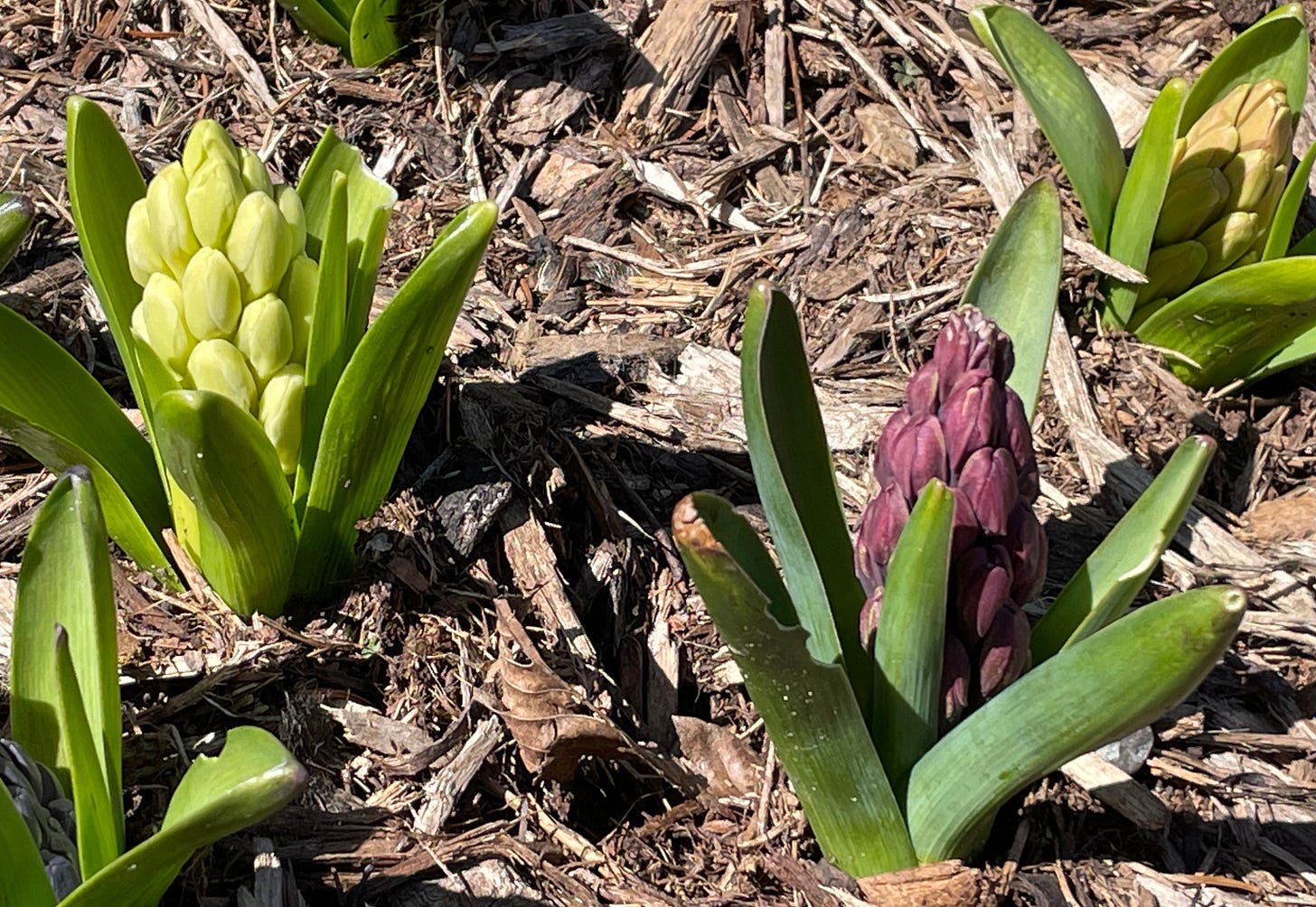

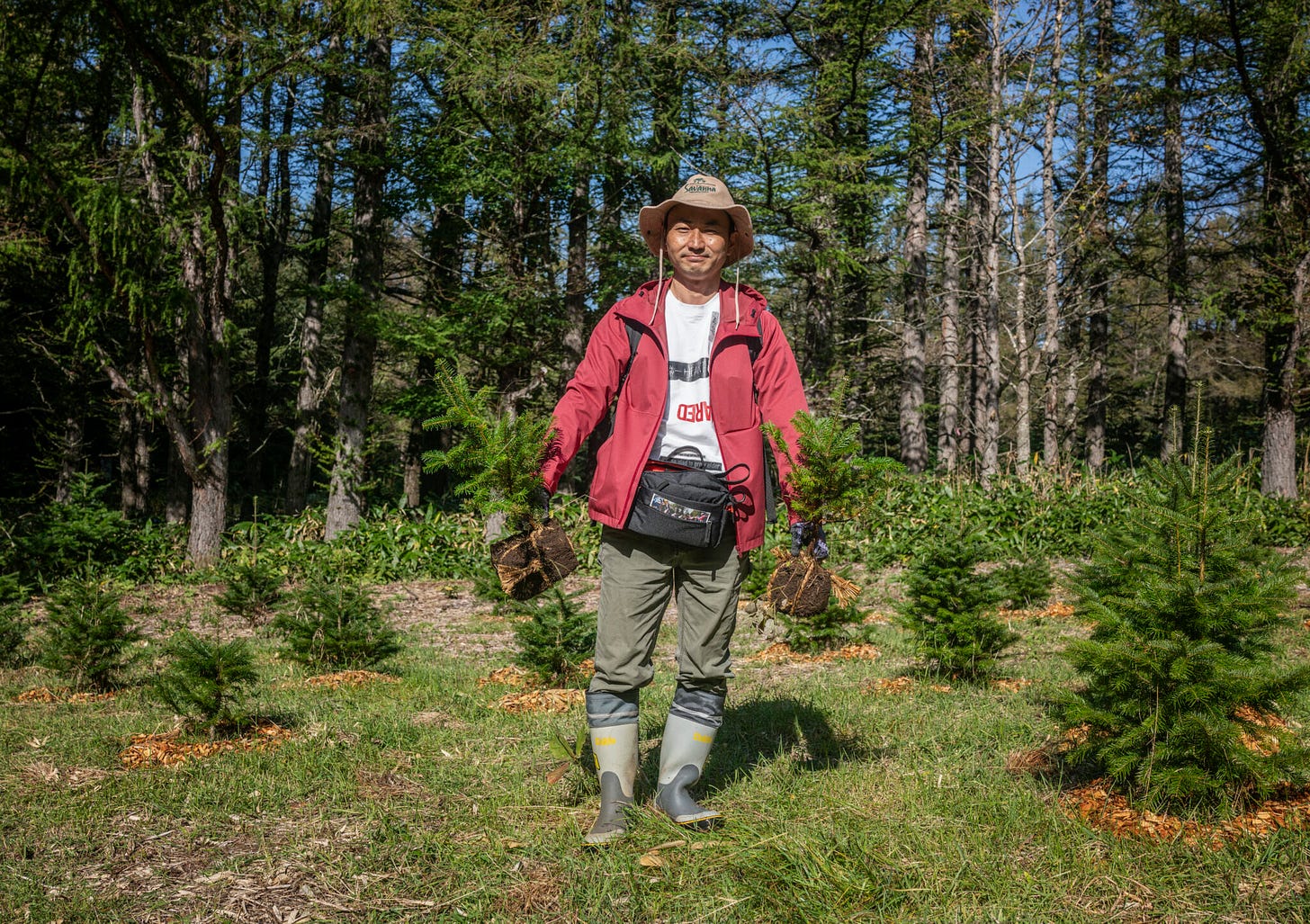
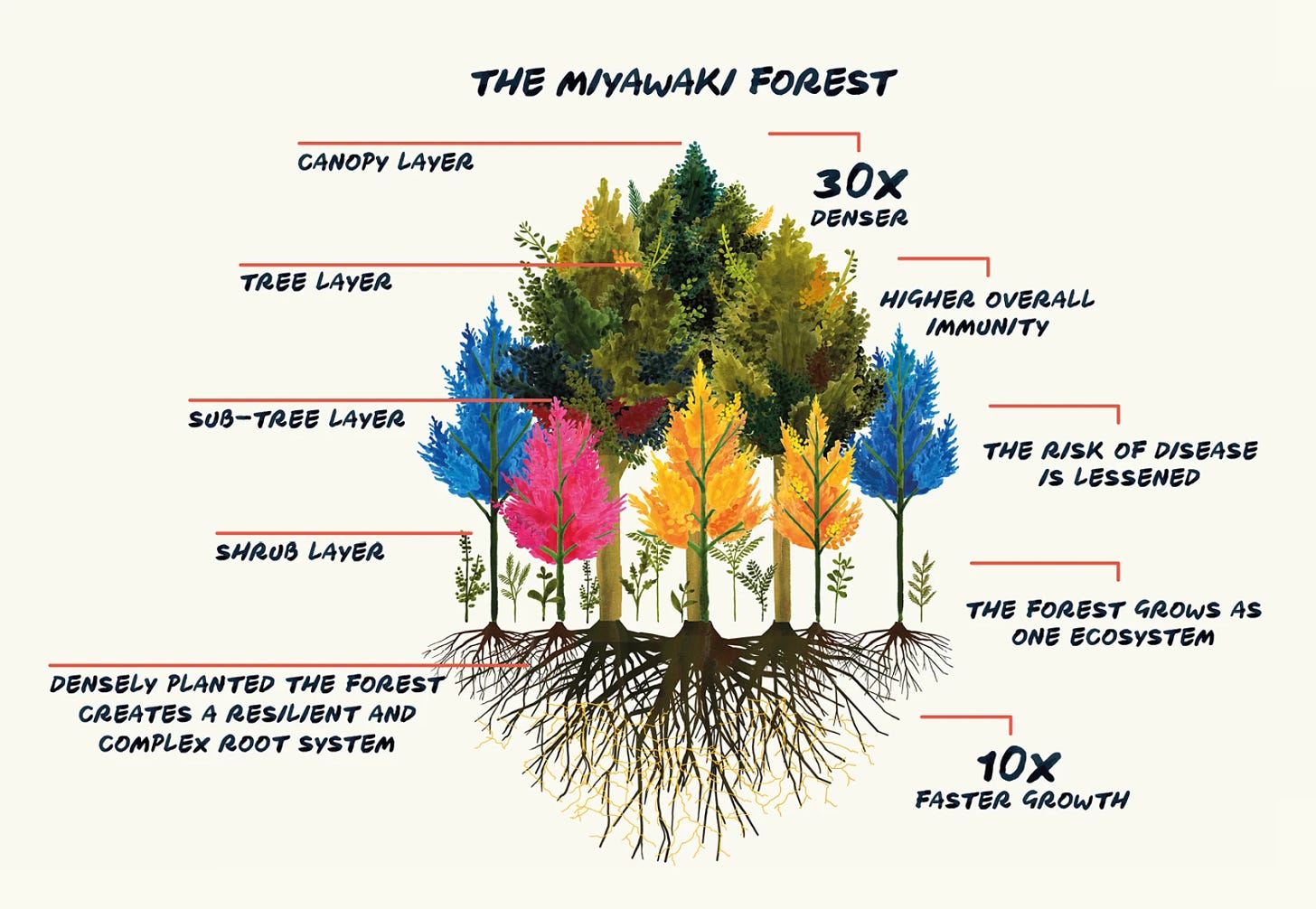

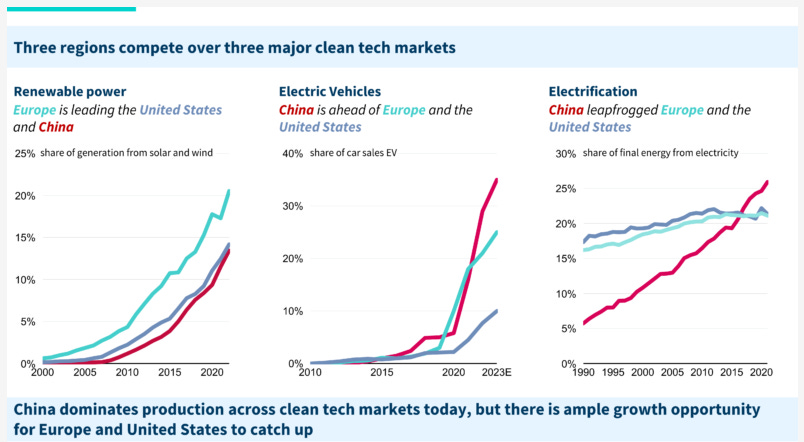

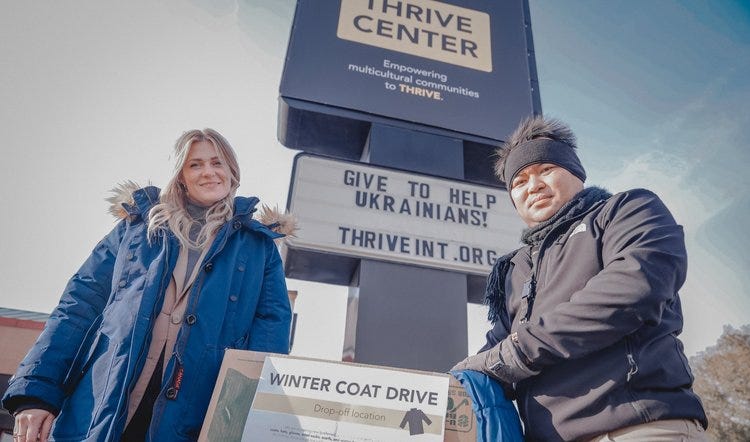
Lots of newsy news-bites here-a lot to chew on. I especially like your personal adaptation stories. Your “little work” makes the greening of our faith contagious.